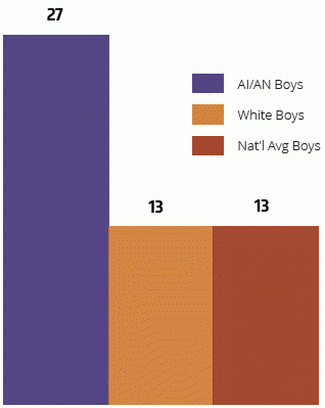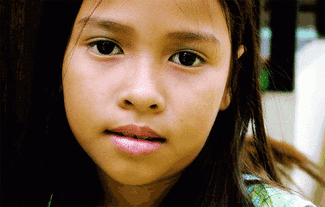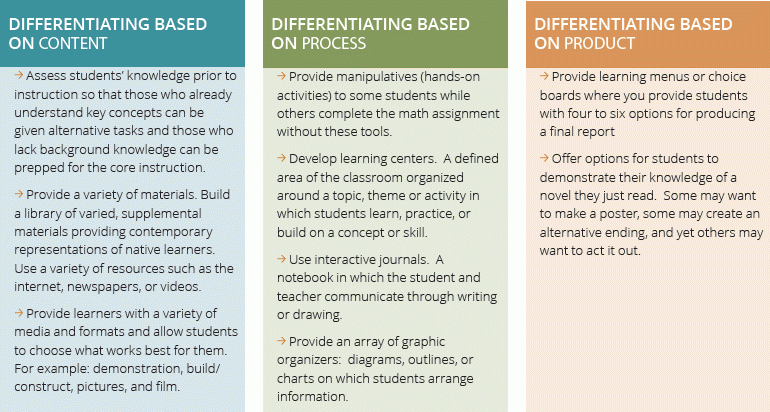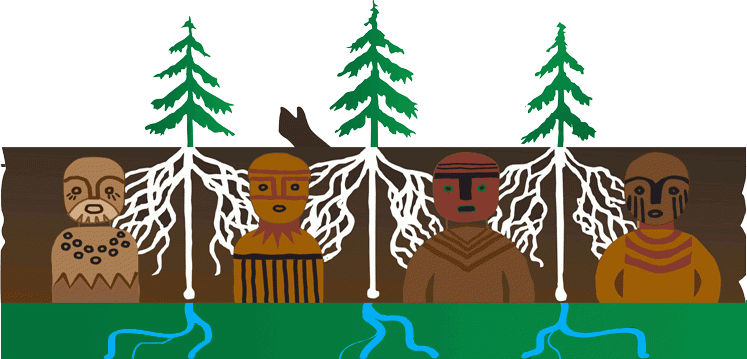Brief 8 - Supporting Native Learners In The Classroom: An RTI Approach
Written By Elizabeth WestSpecial education is instruction that is specially designed to meet the unique needs of a child with a disability. This means education that is individually developed to address a specific child's needs that result from his or her disability. Native learners are disproportionately over represented in special education. No easy answers can be found to the question of what causes disproportionate representation and how to reduce it.
Many in the field of special education believe that a response to intervention (RTI) approach (1-2) will help to reduce disproportionality and advocate for a culturally responsive RTI approach3. A key element of this approach is the ability to successfully differentiate instruction for learners. Differentiated instruction is a framework that teachers can use to implement a variety of evidence-based strategies in culturally responsive ways.
RTI is a multi-tier approach to the early identification and support of students with learning and behavior needs. The RTI process begins with high-quality instruction and universal screening of all children in the general education classroom. Struggling learners are provided with interventions at increasing levels of intensity to support their learning. An RTI model provides learners with appropriate instruction as soon as their learning difficulties are noticed. RTI stresses the use of evidence-based practices before special education referral within the general education classroom.
PERCENT OF 9TH GRADE AI/AN BOYS RECEIVING SPECIAL EDUCATION Compared to White boys and the National Average of boys across races (4)

The Office of Special Education Programs Annual Report to Congress5 on the Implementation of the Individuals with Disabilities Education Act (IDEA) identified:
- In 2012, the disability category of specific learning disability accounted for 46.4% of Native learners in special education
- Native learners were more likely to be served under IDEA than were the children ages 6 through 21 in all other racial/ethnic groups combined
- The majority of Native learners identified to have a disability are educated inside the regular class 80% or more of the day
- Native Learners, ages 6 through 21, are the highest racial/ethnic group served under IDEA for Washington State at 13%.
Disproportionality & Native Learners
A major portion of special education today is driven by Federal Law, now known as the Individuals with Disabilities Education Act (IDEA), which was reauthorized in 2006. This law specifies the types of children who are classified as having a disability, the criteria to be so classified, and the procedural guidelines schools must follow. For a student to be placed in special education the student must meet the criteria of one of the disability categories, and there must be evidence that the disability has had an adverse effect on the student’s educational achievement5.
Native students are disproportionately over represented in special education. Two factors have been identified to contribute to the problem: poverty6 and systemic bias, or favoritism toward a particular group that occurs at multiple levels within a society or institution, making such favoritism an implicit part of it. This type of bias can occur at multiple levels within an education system: curriculum and instruction7, teacher attitude8, and the special education referral process (9).
Research suggests that reducing disproportionality requires a comprehensive approach that includes teacher training, culturally appropriate assessment and instruction, cultural sensitivity, home and school collaboration, and an effective prereferral process (10). One instructional approach, differentiated instruction, focuses on designing and delivering effective learning experiences for students based upon individual student learning needs and preferences (11). Differentiated instruction is a culturally responsive strategy that recognizes that learners can excel in school when their culture, language, heritage and experiences are valued and used to facilitate their learning and development.
Critical Reflections:
- How does your organization support the active involvement of parents/guardians of learners with disabilities?
- How might an RTI approach be useful within your context?
- How does your organization ensure that learners who struggle within a general education setting are provided with culturally responsive and differentiated instruction prior to a referral for special education?

Differentiated instruction is a culturally responsive strategy that recognizes that learners can excel in school when their culture, language, heritage and experiences are valued and used to facilitate their learning and development.
Future Directions For Research
Increasingly, scholars are continuing to identify factors that contribute to disproportionality and are developing strategies to reduce disproportionality. Use of a culturally responsive RTI model and related differentiated instruction has been implicated as being a valuable area for future research.
Emerging areas for research in the field include:
→ Continued development and application of a culturally responsive approach to RTI3.
→ A focus on high quality, culturally responsive multi-tiered academic and behavioral interventions prior to special education placement
→ Teacher training on RTI models and implementation of differentiated instruction.
Considerations For Practitioners
For RTI to be effective, general educators must know about it. They also must know and be able to implement research-based instructional practices and to document their impact on student learning (12). Differentiated instruction is critical to teaching Native learners and includes strategies such as learning contracts and tiered lessons (13).
Learning contracts allow teachers and students to work together in tailoring the what and how of instruction to student learning needs and preferences. Tiered lessons allow teachers to differentiate instruction within a given skill area based on the prior knowledge and skill base that individual students bring to the learning task.
The three components of instruction that can be modified based on a teacher’s ongoing assessment are the content, the process, and the products. You can modify content by choosing the way you “input” it. You can simplify for those who are not yet ready and enrich the content for those who have mastered it.
Some of the ways you can modify the process are by helping students make the learning experience relate to their needs and interests. You can make the material more meaningful (the process) when you include a variety of strategies.
These strategies include graphic organizers of all sorts, group investigation, classifying and sorting, cooperative learning, reciprocal teaching, advance organizers, and analogies and metaphors. You can modify the product by designing product options for your students or use tiered assignments where a range of products are used to demonstrate learning14.
In many Indigenous communities, listening and observing are valued skills, and Indigenous students may be more likely to listen and observe at school than Western students15. Teachers can differentiate instruction to honor these valued skills.

References
1. Yell ML, Katisyannis A & Ryan JB. Ensure compliance with the Individuals with Disabilities Education Improvement Act of 2004. Intervention in School and Clinic 2008; 44(1): 45–51.
2. Zirkel PA & Krohn N. RTI after IDEA: A survey of state laws. Teaching Exceptional Children 2008; 40(3): 71–73.
3. Harris-Murri A, King K & Rostenberg D. Reducing disproportionate minority representation in Special Education programs for students with emotional disturbances: Toward a culturally responsive response to intervention model. Educ. Res. 2006; 39(1): 59-68.
4. Ross T., Kena G, Rathbun A, KewalRamani A, Zhang J, Kristapovich P & Manning E. Higher Education: Gaps in access and persistence study (NCES 2012-046). 2012. U.S. Department of Education, National Center for Education Statistics. Washington, DC: Government Printing Office.
5. U.S. Department of Education, Office of Special Education and Rehabilitative Services, Office of Special Education Programs, 36th Annual Report to Congress on the Implementation of the Individuals with Disabilities Education Act, 2014, Washington, D.C. 2014.
6. Artiles AJ & Bal A.. The next generation of disproportionality research: Toward a comparative model in the study of equity in ability differences. J. Spec. Educ. 2008; 42: 4-14.
7. Haar J, Hall G, Schoepp P & Smith DH. How teachers teach to students with different learning styles. Clearing House 75; 2002: 142-145.
8. Cartledge G & Kourea L. Culturally responsive classrooms for culturally diverse students with and at risk for disabilities. Exceptional Children 2008; 74: 351- 371.
9. Artiles AJ & Trent SC. Overrepresentation of minority students in special education: A continuing debate. J. Spec. Educ. 1994; 27: 410–437.
10. Skiba RJ, Simmons AB, Ritter S, Gibb AC, Rauch MK, Cuadrado J, et al. Achieving equity in special education: History, status, and current challenges. Exceptional Children, 2008; 74(3): 264–288.
11. King-Sears ME. Facts and fallacies: differentiation and the general education curriculum for students with special educational needs. Support for Learning 2008; 23: 55–62.
12. Kratochwill TR, Volpiansky P, Clements M, & Ball C. Professional development in implementing and sustaining multitier prevention models: Implications for response to intervention. School Psych. Rev. 2007; 36: 618-631.
13. Tomlinson CA. How to differentiate instruction in mixedability classrooms (2nd ed.). Alexandria (VA): Association for Supervision and Curriculum Development; 2001.
14. Tomlinson C & Eidson C. The differentiated classroom: responding to the needs of all learners. Alexandria (VA): Association for Supervision and Curriculum Development; 1999.
15. Castagno AE & Brayboy BMKJ. Culturally responsive schooling for indigenous youth: A review of the literature. Review Educ. Res. 2008; 78: 941-993.
FOR MORE INFORMATION:
- IET Brief 4 Indigenous Suicide: Risk & Resiliency
- IET Brief 10 Culturally Responsive Classroom Management
- IET Brief 11 Critical Dimensions of Teaching Indigenous STEM
- RTI Action Network
- The IRIS Center for Training Enhancements
- Association for Supervision and Curriculum Development(ASCD)
- Differentiation Central
CONNECT WITH US ON SOCIAL MEDIA
- Facebook- Indigenous Education Tools
- Twitter- @indedtools; #indigenousevaluation; #nativeed; #ourstoryourplace
Indigenous Education Tools is a part of the Building Capacity And Cultivating Innovation project (BCCI). BCCI is designed to develop resources and practices that will have exponential impacts on efforts to improve Native student success across a variety of sectors.
Indigenous Education Tools / BCCI Project Contacts:
Megan Bang- mbang3@uw.edu
Charlene Nolan- nolanc3@uw.edu
Gabriel de Los Angeles- kender20@uw.edu



